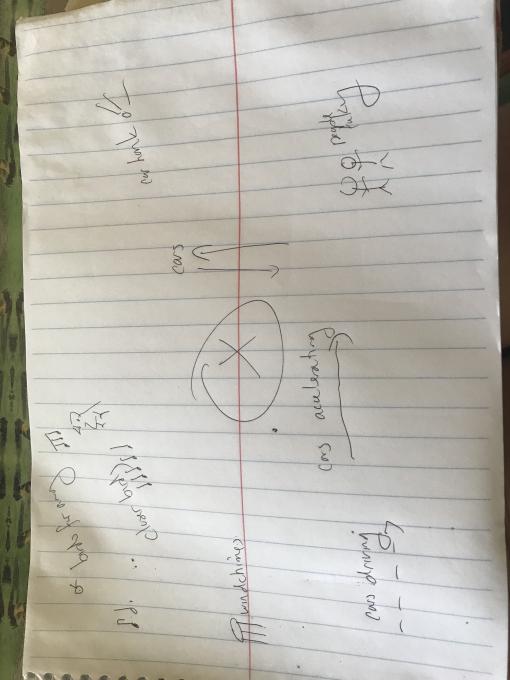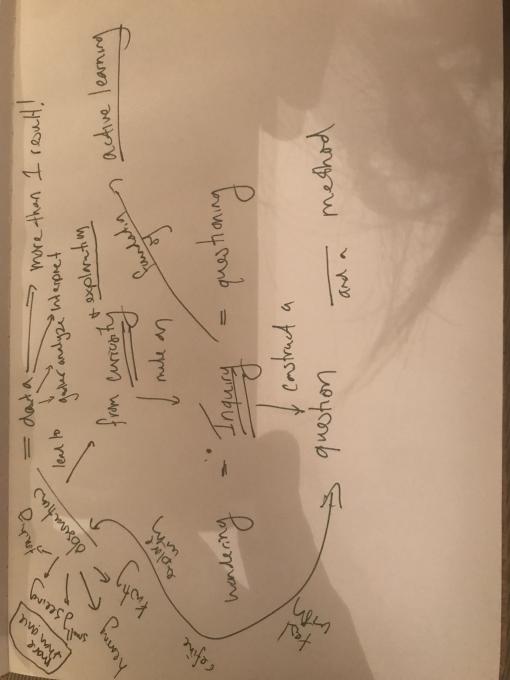Laura
Forum Replies Created
Viewing 12 posts - 1 through 12 (of 12 total)
-
LauraParticipantI will create a 4 point BAME rubric - beginning, approaching, meeting, exceeding -- that focuses on the research question, hypothesis, investigation procedure, and presentation of results. It's important for me to take into account the English language levels of my students, and for these reason I think most of the focus on language will go into the inquiry question, hypothesis, and brief analysis of results. My students are also new to graphing and data presentation, and since this is such an important skills I also want to focus on this in the rubric. For these reasons, I found the assessment rubric for 4th grade reports to be the most helpful.in reply to: Sharing Student Projects #718764
-
LauraParticipantI have not led any major inquiry based activities, though I have led some smaller ones, like looking at why snow is white, and the best amount of water for a seedling. I think one challenge for me is language -- "I wonder" boards are very open-ended, and I am teaching students who are new to school and to English. I often find myself relying on predictions rather than more open-ended wondering. Another challenge is modelling what strong inquiry looks like. I also think that engagement will be a challenge -- I need to find high-engagement, meaningful opportunities for students to base their wonderings on.in reply to: Assessing Investigations – Classroom Case Study #718758
-
LauraParticipantI research Project Feederwatch. It is a Citizen Scientist project where people count birds in their backyard over the winter, from November - April. Participants are sent a research kit that includes a bird id calendar, but they have to supply the feeder and birdseed. It's used, as the video noted, to study winter bird abundance, and provides "information about bird population biology that cannot be detected by any other available method." Participants can see information such as historic maps, the top birds in their region, bird summaries, and trend graphs. I think this would be a fun winter project to practice bird identification and speculate about what might be causing changes in bird population over time, as well as away to explore the interconnectedness of life.in reply to: Data Literacy Through Citizen Science #714712
-
LauraParticipantI think that one important way to encourage curiosity and questions is to begin with open ended questions, and give students the opportunity to explore them before adding the research component. For example, when we talked about what makes snow white, students came up with answers like, "it comes from the moon." I think deeper observational and experimental questions come from repeated practice and modelling. It also comes from building background and content knowledge. I also think field trips and getting kids outside and out of the classroom is an important way to encourage curiosity!in reply to: Launching Investigations #707394
-
LauraParticipantI am a contributor to eBird. One challenge I face is identifying birds accurately, especially when it is a bird I can only see briefly or from a distance, or one I've never seen before. Since I'm new to birding, another challenge is contributing more "rare" birds and being fully certain when you've identified a bird -- for example, we were pretty sure we saw a black-chinned hummingbird in a tree, but didn't feel completely positive about it. I expect that students who participate in this project would strengthen their observational skills.in reply to: Symbiosis in the Soil – Classroom Case Study #706959
-
LauraParticipantI think one important way we can be catalysts for students to observe and wonder is by giving them good opportunities -- for example, both the bird video we watched and pictures in the presentation were all really interesting. We can also both model asking and encourage asking open-ended questions. We can also make these opportunities a regular part of the classroom, such as with the ?I wonder" board, so that students can develop these skills.in reply to: Supporting Open-ended Questions #706910
-
LauraParticipantII live in a pretty urban area, and the majority of the sounds I heard were man-made -- a lot of cars, people talking, the sound of wind chimes. It'd be interesting to do this activity with students in a variety of places. I also really like the way this sound map activity was organized --rather than just making a list of things you hear, you are mapping sounds and putting yourself in the center. I also like that you can use symbols and images, for students who may be new to reading and writing. I really liked the lemon lesson too -- I think adding a competitive edge and real reason behind making the observations makes the importance of both strong observations and strong evidence really clear to students.
 in reply to: Encouraging Observations #706883
in reply to: Encouraging Observations #706883 -
LauraParticipantI think positioning students as scientists will be the most important approach in my setting because I believe it's an opportunity to empower students and allow them to participate in meaningful, authentic learning. I think starting with observation and inquiries -- like in the "I Wonder" board is also important, though I think this is something that my students may need a lot of modelling of and practice in. I also really liked the example vulture activity -- I think examples and models will be very important for my students.in reply to: Linking Citizen Science & Inquiry #699587
-
LauraParticipantI wish to model all of these practices in my teaching, but I especially want to focus on positioning youth as people who do science. I work with newcomer students who have little to no previous formal education, and my colleagues and I have found that developing a "growth mindset" around school-related work can be especially challenging for these students. By positioning my students as people who do science, and helping them become experts and active participants in citizen science, I hope to make my students feel proud, confident, and empowered. I think it's also important to make their science learning more authentic. I hope to model this in my teaching by finding real citizen science projects for my students to participate in, helping them see their roles as important and real, and supporting them by giving them the skills to become experts.in reply to: Citizen Science in Your Classroom #699583
-
LauraParticipantI have not yet used any citizen-science projects with my learners. I am interested in Project Budburst and Project Feederwatch. We have unused raised beds at our school, and I am in really interested in incorporating more gardening into our science activities. I think Project Budburst would be a great way for students to develop their observation skills in a meaningful way. I am also thinking about ways to incorporate citizen science projects into distance learning, and I think Project Feederwatch might be a fun way for my students to do this.in reply to: Intro to Citizen Science #699580
-
LauraParticipantWe do a seed growing activity -- students place seeds in cotton, add water, and put seeds in sunlight and in a dark closet to see if the seeds grow. I think this is confirmation inquiry, because students are provided with the question and the procedure. Through this activity, students develop experience in conducting investigations and collecting and organizing data. To modify this lesson to make it guided inquiry, I would make the question more open ended -- what are the best conditions under which plants can grow? This would support students in designing their own procedures to test their theories.in reply to: Inquiry in Your Classroom #699576
-
LauraParticipantMy concept of inquiry is based in curiosity -- in observing the world, and coming up with a question. This is where inquiry starts. Then, it becomes a cycle of making observations, coming up with an inquiry question, testing possible answers to that question, and observing those answers. Inquiry is supported by a foundation of strong observation and strong questioning skills.
 in reply to: Intro to Inquiry #699574
in reply to: Intro to Inquiry #699574
Viewing 12 posts - 1 through 12 (of 12 total)

